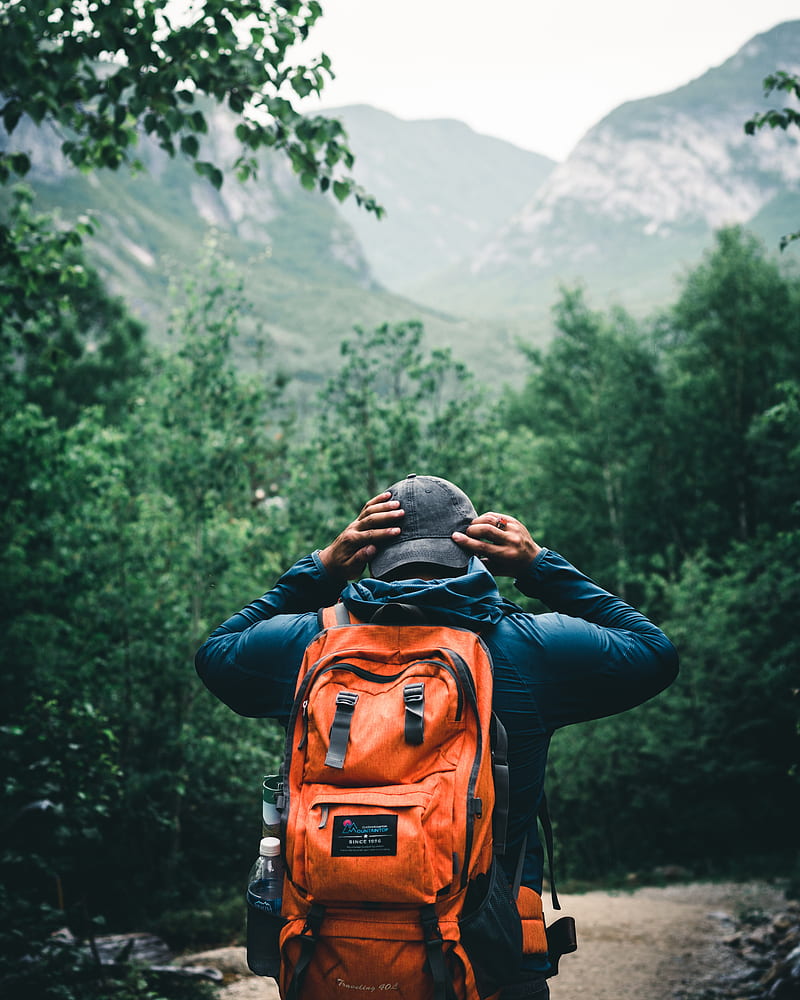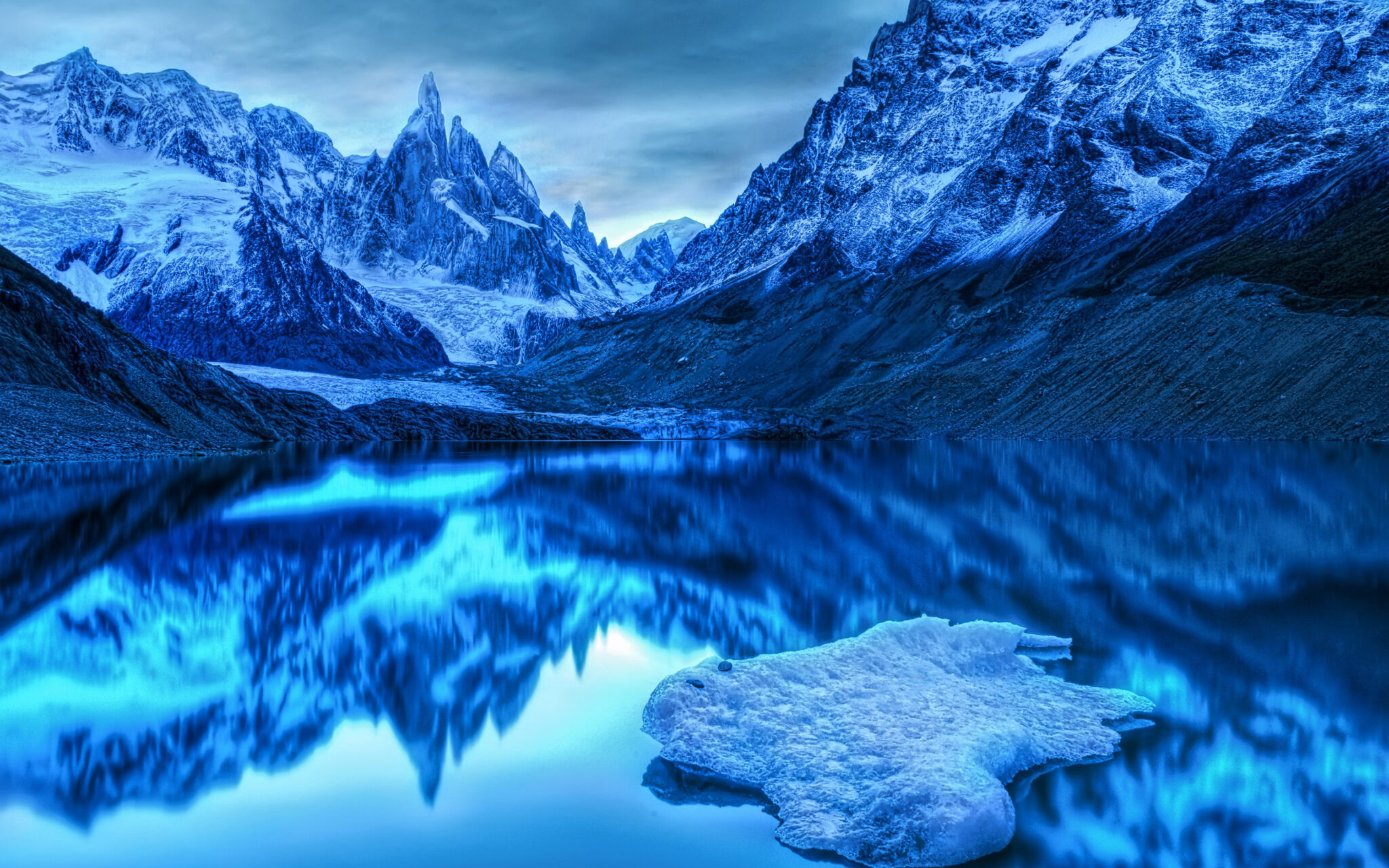In the realm of extreme travel, Antarctica stands as the ultimate destination. This remote, frozen continent, devoid of permanent human settlement, is a place of sublime beauty and untouched wilderness. Visiting Antarctica is not just a journey; it’s an expedition into the pristine heart of our planet. In this travel blog, we will embark on a virtual adventure to Antarctica, exploring its incredible landscapes, unique wildlife, and the challenges and rewards of this once-in-a-lifetime experience.
Antarctica: A Frozen Wonderland: Antarctica is often described as a frozen wonderland, and for a good reason. Its landscapes are nothing short of magical. As you approach the continent, you’ll be greeted by towering icebergs, glittering glaciers, and surreal, ice-carved formations. One of the most iconic sights is the Lemaire Channel, a narrow waterway flanked by colossal ice cliffs that create a dramatic and breathtaking passage.
Antarctica’s pristine and breathtaking places:
1. The Antarctic Peninsula – Your Gateway to Antarctica
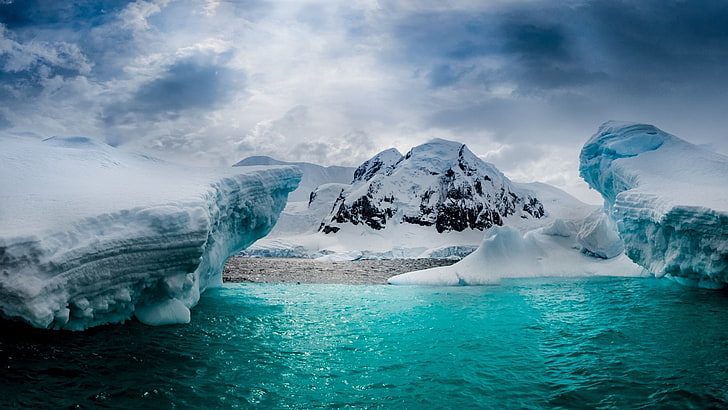
Route Map: Start your journey by flying from Punta Arenas, Chile, to King George Island, Antarctica.
The Antarctic Peninsula, the northernmost part of the continent, is often the first stop for visitors. It’s a place of incredible natural beauty, with towering icebergs, spectacular fjords, and abundant wildlife. Highlights include:
- Paradise Bay: Witness colossal glaciers calving into the sea and observe curious penguins and seals on the ice floes.
- Lemaire Channel: Cruise through the iconic Lemaire Channel, with its towering ice cliffs on either side, creating a breathtaking passage.
2. South Shetland Islands – A Wildlife Paradise
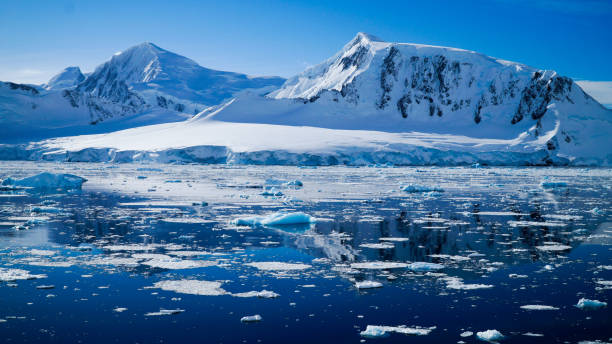
Route Map: Sail from King George Island to the South Shetland Islands.
The South Shetland Islands, located just off the Antarctic Peninsula, are a haven for wildlife enthusiasts. Here, you can encounter penguin colonies, seals, and various bird species. Must-visit sites include:
- Livingston Island: Explore the beaches, home to chinstrap and gentoo penguins, and enjoy panoramic views from its peaks.
- Deception Island: Venture into the caldera of an active volcano, where you can take a dip in thermally heated waters at Pendulum Cove.
3. Elephant Island – Shackleton’s Legacy
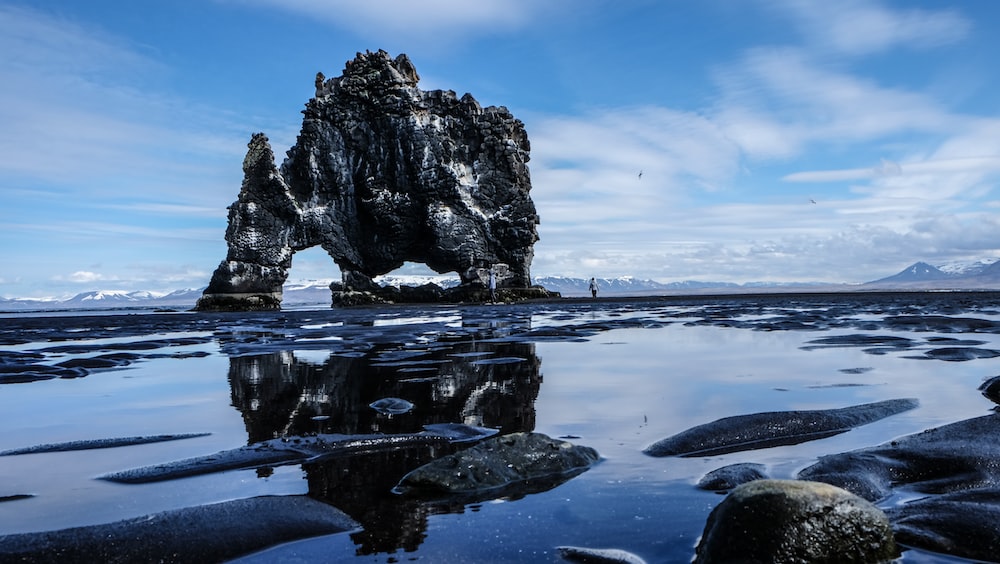
Route Map: Sail from the South Shetland Islands to Elephant Island.
Elephant Island is known for its connection to the famous explorer Ernest Shackleton. It was here that Shackleton and his men sought refuge during their ill-fated 1914-1917 expedition. The island’s rugged landscapes are a testament to human endurance and survival in extreme conditions.
4. Deception Island – An Antarctic Oasis
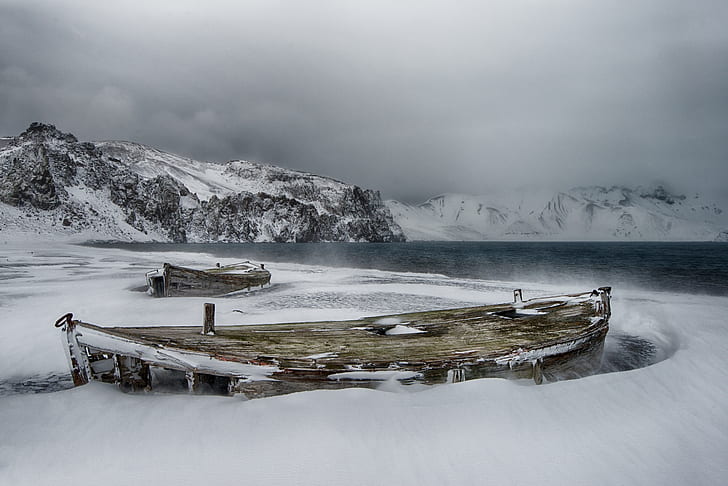
Route Map: Sail from Elephant Island to Deception Island.
Deception Island is a unique destination, offering a glimpse into Antarctica’s geological activity. The island is home to a caldera with geothermal hot springs. Visitors can even take a dip in the steaming waters, an extraordinary experience in the frozen wilderness.
5. The Ross Ice Shelf – The Largest Ice Shelf in Antarctica
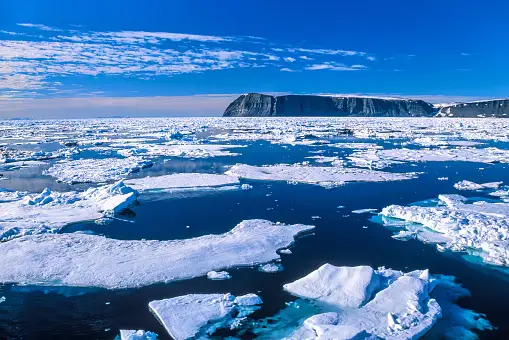
Route Map: Sail from Deception Island to the Ross Ice Shelf.
The Ross Ice Shelf is the largest ice shelf in Antarctica, and it’s a destination of epic proportions. The journey to this vast, frozen wilderness is an adventure in itself. Once there, you’ll be in the heart of the continent, surrounded by pristine ice and incredible solitude.
- McMurdo Station: Visit the largest research station in Antarctica, and explore the surrounding landscapes of the Ross Sea.
- Scott’s Hut: See the historic huts used by early Antarctic explorers, including Captain Robert Falcon Scott, preserved as if in a time capsule.
Do you know?
- Driest Place on Earth: Antarctica is the driest continent. It’s technically a desert, receiving very little precipitation. In some regions, it’s even drier than the Sahara Desert.
- Beneath the Ice: Antarctica isn’t just a frozen desert on the surface. The continent is hiding an entire ecosystem beneath the ice. Microorganisms and small animals thrive in subglacial lakes and streams.
- First Church: There’s a small Russian Orthodox Church, the Holy Trinity Church, located on King George Island, serving the researchers in the area. It’s one of the few non-research structures in Antarctica.
- Frozen Water: Antarctica contains about 90% of the world’s fresh water, stored in the form of ice. If all the ice were to melt, global sea levels would rise dramatically.
- Sun Never Sets: During the summer months, parts of Antarctica experience a phenomenon called “white nights,” where the sun doesn’t set for several weeks. It’s a unique experience for visitors.
- Active Volcanoes: Antarctica has active volcanoes. Mount Erebus, on Ross Island, is the southernmost volcano on Earth and has a continuously active lava lake.
- No Time Zones: The entire continent of Antarctica operates on New Zealand time, which is the time zone of the nearest inhabited landmass.
- No Reptiles: Antarctica is the only continent without reptiles. No snakes, lizards, or other reptiles can survive in its extreme cold.
- Icebergs Galore: Antarctica is the birthplace of icebergs. The continent sheds thousands of icebergs every year, with some reaching colossal sizes.
- Longest Ski Race: The Antarctic Ice Marathon is the southernmost marathon on Earth. Participants brave frigid temperatures and challenging terrain to complete this unique race.
For you to know!
Wildlife Encounters While the scenery in Antarctica is captivating, it’s the wildlife that truly steals the show. The continent is home to some of the world’s most extraordinary creatures. Penguins are a common sight, with species like the Adélie, Gentoo, and the charismatic Emperor penguin. You’ll also encounter seals, such as the Weddell, Ross, and Leopard seals, basking on ice floes. But perhaps the most celebrated residents are the majestic whales, including humpbacks, orcas, and minke whales, often seen breaching the icy waters.
The Polar Circle and Scientific Research:
Antarctica is not only a pristine wilderness but also a hub of scientific research. The region is integral to our understanding of climate change, with numerous research stations operating year-round. Visiting some of these stations, you gain insight into the invaluable work being done to understand our planet’s climate and ecosystem. A journey to the Antarctic Circle is a testament to human curiosity and our commitment to preserving the environment.
1. Climate Research:
- Antarctic research is pivotal in understanding climate change. Scientists drill ice cores from the continent’s massive ice sheets to study past climate conditions. Ice cores provide valuable data on temperature, greenhouse gas concentrations, and climate variations over thousands of years.
- Continuous monitoring of the Antarctic climate helps predict future climate trends and assess the impact of global warming on the region. This research contributes to our understanding of climate systems and aids in the development of climate models.
2. Glaciology:
- The study of Antarctica’s ice sheets and glaciers is crucial for comprehending sea-level rise. Scientists use satellite imagery, remote sensing, and on-site measurements to monitor ice sheet dynamics, mass balance, and ice movement.
- Research in glaciology provides insights into the potential contribution of Antarctica to sea-level changes, a topic of global significance as rising sea levels impact coastal regions around the world.
3. Marine Ecosystems:
- The Southern Ocean surrounding Antarctica is home to diverse marine life. Researchers study the unique ecosystems of the region, with a focus on key species like krill, seals, and penguins.
- This research helps assess the health and resilience of Antarctic marine ecosystems in the face of climate change, fishing activities, and other anthropogenic impacts. It provides valuable insights into biodiversity conservation efforts.
4. Geology and Geophysics:
- Antarctica’s geology holds essential clues to Earth’s history. Scientists investigate rock formations, fossils, and subglacial lakes to uncover the continent’s geological evolution.
- By analyzing the geological history of Antarctica, researchers gain insights into plate tectonics, past climatic conditions, and the evolution of life on our planet. This research also aids in understanding the continent’s mineral resources.
5. Astronomy and Space Research:
- Antarctica’s unique atmospheric conditions make it an excellent location for space and astronomy research. Observatories in the region study cosmic microwave background radiation and search for high-energy neutrinos originating from distant galaxies.
- This research contributes to our understanding of the universe, the cosmic microwave background’s structure, and the detection of high-energy cosmic rays. Antarctica’s cold and dry environment reduces interference from atmospheric water vapor and aids in the collection of precise astronomical data.
These areas of Antarctic research play a vital role in advancing our knowledge of the Earth’s climate, geological history, and space beyond our planet. They contribute to both scientific understanding and practical applications, such as climate prediction, environmental conservation, and the exploration of the universe.
Challenges and Rewards:
Exploring Antarctica is not for the faint of heart. The challenges include sub-zero temperatures, the potential for extreme weather conditions, and the isolation of the continent. However, the rewards are equally monumental. The sense of wonder as you stand on the seventh continent, surrounded by pristine landscapes and the knowledge that you are in a place where very few have ventured, is an experience that will stay with you for a lifetime.
How to get there?
While the cost of Antarctic expeditions can vary based on factors such as the duration of the trip, cabin type, and specific itinerary, here are approximate starting budget costs for expeditions with some of the budget-friendly providers mentioned:
- Oceanwide Expeditions: Oceanwide offers a range of Antarctic expeditions. Budget options typically start at around $5,000 to $7,000 per person for a 10- to 12-day voyage.
- Quark Expeditions: Quark’s “Polar Pass” program allows you to save on multiple expeditions. Budget-friendly Antarctic cruises with Quark may start at around $6,000 to $8,000 for 10- to 12-day trips.
- Bark Europa: Sailing to Antarctica on a tall ship like Bark Europa can be a unique and budget-friendly option. Prices for such expeditions may start at around $7,000 to $9,000 for a 20- to 25-day journey.
- Antarpply Expeditions: Antarpply offers budget-friendly classic Antarctic cruises. Prices for their expeditions may start at approximately $6,000 to $8,000 for 10- to 12-day trips.
- G Adventures: G Adventures offers small-group tours to Antarctica. Budget-friendly options with G Adventures can start at around $7,000 to $9,000 for 10- to 12-day voyages.
Please note that these are approximate starting prices, and the actual cost of your expedition may vary based on factors such as the cabin type you choose, the time of booking, and any additional activities or services you opt for. Be sure to visit the websites of these operators for the most up-to-date pricing and detailed information about their specific expeditions.
When booking with any of these providers, you can generally expect the following:
Route: Most budget expeditions depart from Ushuaia, Argentina, and follow a route through the Drake Passage to the Antarctic Peninsula. The exact itinerary may vary, but you’ll typically explore the Western Peninsula and its surrounding islands.
Departures from New Zealand:
- Christchurch, New Zealand, serves as an important gateway for travelers heading to Antarctica. Most flights from New Zealand connect to McMurdo Station in Antarctica. From there, you can join various research and expedition teams.
- Air New Zealand typically operates seasonal flights to Antarctica.
Departures from Australia:
- Hobart, Tasmania, in Australia is another departure point for expeditions to Antarctica. The Australian Antarctic Division organizes expeditions and research missions from this location.
Departures from South Africa:
- Cape Town, South Africa, offers flights to the Antarctic research stations on the continent’s eastern side, such as the SANAE IV station.
- Various tour operators also offer cruise expeditions departing from Cape Town.
Services:
- Accommodation: Budget expeditions often offer basic but comfortable accommodations, such as shared cabins or dormitory-style rooms.
- Meals: Meals are typically included and served in a communal dining area. Special dietary requirements can often be accommodated with advance notice.
- Excursions: While the number and types of excursions may be limited compared to luxury cruises, you’ll still have opportunities for wildlife viewing, guided hikes, and zodiac boat tours.
- Lectures: Many budget operators provide educational lectures and presentations about the Antarctic environment.
Tips and tricks:
Finding budget-friendly travel providers for Antarctica can be a bit challenging, as Antarctic expeditions tend to be on the pricier side due to the remote location and the costs associated with ensuring safety and comfort in the extreme environment. However, there are a few ways to make your trip more affordable:
- Last-Minute Deals: Some tour operators offer last-minute deals for empty cabins on cruises departing soon. Keep an eye on their websites or subscribe to their newsletters for announcements.
- Group Bookings: Traveling in a group can sometimes lead to discounts, as tour operators offer special rates for group bookings. Gather a group of friends or family to share the experience and costs.
- Early Booking Discounts: Conversely, booking well in advance can also result in savings, as tour operators often offer early booking discounts to encourage travelers to plan ahead.
- Shorter Expeditions: Consider shorter expedition lengths. While this may limit the number of destinations you can visit, it can significantly reduce the cost.
- Research Budget Operators: Look for budget-friendly tour operators that specialize in providing more affordable Antarctic experiences. While their offerings may be less luxurious, they can still provide a remarkable adventure.
- Cruise and Flight Package Deals: Some tour operators offer package deals that include flights from certain gateway cities in South America (like Ushuaia, Argentina) to Antarctica. These packages can provide a more cost-effective option.
Things you need to keep in your mind:
As travelers to this fragile ecosystem, it’s essential to adhere to strict guidelines to minimize our impact on the environment. These guidelines, set by international agreements, include restrictions on the number of visitors, strict waste disposal regulations, and biosecurity measures to prevent the introduction of non-native species.
- Follow the Expedition Leader: Pay close attention to your expedition leader and follow their instructions at all times. They are experienced in navigating the challenging Antarctic environment.
- Respect Wildlife: Keep a safe distance from wildlife and avoid approaching or disturbing animals. Adhere to responsible wildlife viewing guidelines.
- Clean Gear and Clothing: To prevent the introduction of non-native species to Antarctica, clean and disinfect all gear and clothing before arriving on the continent.
- Biosecurity Measures: Follow biosecurity measures, such as vacuuming your outer clothing and gear, to remove any foreign seeds or contaminants before disembarking in Antarctica.
- Minimize Waste: Dispose of waste and litter properly, following the “leave no trace” principles. Recycling and waste management practices are in place on most expeditions.
- Photography: Be mindful of your impact when taking photographs. Avoid trampling on delicate vegetation, and do not approach wildlife too closely for the sake of a photograph.
Environmental Responsibility:
- Follow Environmental Guidelines: Abide by environmental guidelines and regulations designed to protect Antarctica’s unique and fragile ecosystem.
- Leave Nothing Behind: Ensure you leave Antarctica as you found it. Avoid leaving any litter or human waste.
Safety Precautions:
- Safety Drills: Participate in safety drills and familiarize yourself with emergency procedures, including evacuation plans.
- Stay Hydrated: Drink plenty of water to stay hydrated in the dry Antarctic air.
Remember that Antarctica is a pristine and fragile environment, and responsible travel is crucial to preserve its unique beauty and protect its ecosystems. Follow the instructions provided by your tour operator and be respectful of the rules and guidelines in place to ensure a safe and environmentally friendly journey.
Wanderer’s Word:
The memories you create while exploring Antarctica’s breathtaking landscapes, witnessing its extraordinary wildlife, and participating in this unparalleled adventure will last a lifetime. By adhering to these instructions and guidelines, you can ensure that your visit to Antarctica is not only awe-inspiring but also leaves no lasting impact on this pristine environment. Antarctica is a destination of wonder and reverence, a place where nature’s grandeur and fragility coexist, making it a journey of a lifetime.
” In Antarctica, even the coldest hearts can thaw in the warmth of its frozen beauty. “

